A Non-Intrusive Signal-Based Fault Diagnosis Method for Proton Exchange Membrane Water Electrolyzer Using Empirical Mode Decomposition
Abstract
:1. Introduction
2. Methodology
2.1. Experimental Setup
2.1.1. Electrolyzer Cell
2.1.2. Polarization Curves
2.1.3. Chronoamperometry
2.2. Signal Decomposition using EMD
- For a subset, the number of extrema and the number of zero-crossings must either be equal or differ at most by one.
- At any point, the local average of the envelope defined by the local maxima and the envelope defined by the local minima is close to zero.
- Set the-tolerance value ().
- Identify all extrema of x(t) (peaks and troughs).
- Calculate of the upper and the lower envelopes of x(t) to generate u(t) and l(t).
- Calculate the mean signal m(t), average of u(t) and l(t):
- Subtract m(t) from x(t) to obtain the detail h1(t) = s(t) − m(t):
- Calculate the standard deviation SD:
- If h1(t) verifies IMF conditions SD < , assignment of h1(t) as the first component of s(t), imf1(t).
- If not, h1(t) is treated as the original signal, i.e., steps (2)–(7) are iterated k times until the first IMF is obtained, and assignment of the component h1k(t) − h1(k−1)(t) − m1k(t) as the first IMF, imf1(t).
- Remove the imf1(t) from the original signal to get the first residue r1(t) = s(t) − imf1(t).
- Use the residue r1(t) as an original signal and iterate the steps (2) to (8) to obtain the others IMFs.
3. Results and Discussion
4. Conclusions
Supplementary Materials
Author Contributions
Funding
Institutional Review Board Statement
Informed Consent Statement
Conflicts of Interest
Abbreviations
| AM-FM | Amplitude modulation and frequency modulation |
| EMD | Empirical mode decomposition |
| IMF | Intrinsic mode function |
| PEM WE | proton exchange membrane water electrolyzer |
References
- Barreto, L.; Makihira, A.; Riahi, K. The hydrogen economy i.n the 21st century: A sustainable development scenario. Int. J. Hydrogen Energy 2003, 28, 267–284. [Google Scholar] [CrossRef] [Green Version]
- Barbir, F. PEM electrolysis for production of hydrogen from renewable energy sources. Sol. Energy 2005, 78, 661–669. [Google Scholar] [CrossRef]
- Carmo, M.; Fritz, D.L.; Mergel, J.; Stolten, D. A comprehensive review on PEM water electrolysis. Int. J. Hydrogen Energy 2013, 38, 4901–4934. [Google Scholar] [CrossRef]
- Lettenmeier, P.; Wang, R.; Abouatallah, R.; Helmly, S.; Morawietz, T.; Hiesgen, R.; Kolb, S.; Burggraf, F.; Kallo, J.; Gago, A.S.; et al. Durable Membrane Electrode Assemblies for Proton Exchange Membrane Electrolyzer Systems Operating at High Current Densities. Electrochim. Acta 2016, 210, 502–511. [Google Scholar] [CrossRef] [Green Version]
- Majasan, J.O.; Cho, J.I.S.; Dedigama, I.; Tsaoulidis, D.; Shearing, P.; Brett, D.J.L. Two-phase flow behaviour and performance of polymer electrolyte membrane electrolyzers: Electrochemical and optical characterization. Int. J. Hydrogen Energy 2018, 33, 15659–15672. [Google Scholar] [CrossRef]
- Ito, H.; Maeda, T.; Nakano, A.; Hasegawa, Y.; Yokoi, N.; Hwang, C.M.; Ishida, M.; Kato, A.; Yoshida, T. Effect of flow regime of circulating water on a proton exchange membrane electrolyzer. Int. J. Hydrogen Energy 2010, 18, 9550–9560. [Google Scholar] [CrossRef]
- Dedigama, I.; Angeli, P.; Ayers, K.; Robinson, J.B.; Shearing, P.R.; Tsaoulidis, D.; Brett, D.J.L. In situ diagnostic techniques for zcharacterization of polymer electrolyte membrane water zelectrolyzers–Flow zvisualization and electrochemical impedance spectroscopy. Int. J. Hydrogen Energy 2014, 39, 4468–4482. [Google Scholar] [CrossRef]
- Selamet, O.F.; Pasaogullari, U.; Spernjak, D.; Hussey, D.S.; Jacobson, D.L.; Mat, M.D. Two-phase flow in a proton exchange membrane electrolyzer visualized in situ by simultaneous neutron radiography and optical imaging. Int. J. Hydrogen Energy 2013, 38, 5823–5835. [Google Scholar] [CrossRef]
- Aubras, F.; Deseure, J.; Kadjo, J.J.; Dedigama, I.; Majasan, J.; Grondin-Perez, B.; Chabriat, J.-P.; Brett, D.J.L. Two-dimensional model of low-pressure PEM electrolyser: Two-phase flow regime, electrochemical modelling and experimental validation. Int. J. Hydrogen Energy 2017, 42, 26203–26216. [Google Scholar] [CrossRef]
- Yuan, X.; Wang, H.; Sun, J.C.; Zhang, J. AC impedance technique in PEM fuel cell diagnosis—A review. Int. J. Hydrogen Energy 2007, 32, 4365–4380. [Google Scholar] [CrossRef]
- Lebbal, M.; Lecøeuche, S. Identification and monitoring of a PEM zelectrolyzer based on dynamical modelling. Int. J. Hydrogen Energy 2009, 34, 5992–5999. [Google Scholar] [CrossRef] [Green Version]
- Olivier, P.; Bourasseau, C.; Bouamama, B. Dynamic and multiphysic PEM electrolysis system modelling: A bond graph approach. Int. J. Hydrogen Energy 2017, 42, 14872–14904. [Google Scholar] [CrossRef]
- Huang, N.E.; Shen, Z.; Long, S.R.; Wu, M.C.; Shih, H.H.; Zheng, Q.; Yen, N.; Tung, C.C.; Liu, H.H. The empirical mode decomposition and the Hilbert spectrum for nonlinear and non-stationary time series analysis. Proc. R. Soc. Lond. Ser. A Math. Phys. Eng. Sci. 1998, 454, 903–995. [Google Scholar] [CrossRef]
- Lei, Y.; Lin, J.; He, Z.; Zuo, M.J. A review on empirical mode decomposition in fault diagnosis of rotating machinery. Mech. Syst. Signal Process. 2013, 35, 108–126. [Google Scholar] [CrossRef]
- Wu, S.-D.; Wu, P.-H.; Wu, C.-W.; Ding, J.-J.; Wang, C.-C. Bearing Fault Diagnosis Based on Multiscale Permutation Entropy and Support Vector Machine. Entropy 2012, 14, 1343–1356. [Google Scholar] [CrossRef] [Green Version]
- Zanin, M.; Zunino, L.; Rosso, O.A.; Papo, D. Permutation Entropy and Its Main Biomedical and Econophysics Applications: A Review. Entropy 2012, 14, 1553–1577. [Google Scholar] [CrossRef]
- Rostaghi, M.; Azami, H. Dispersion Entropy: A Measure for Time-Series Analysis. IEEE Signal Process. Lett. 2016, 23, 610–614. [Google Scholar] [CrossRef]
- Zheng, Z.; Pe_ra, M.-C.; Hissel, D.; Becherif, M.; Agbli, K.-S.; Li, Y. A double-fuzzy diagnostic methodology dedicated to online fault diagnosis of proton ex- change membrane fuel cell stacks. J. Power Sources 2014, 271, 570–581. [Google Scholar] [CrossRef]
- Yu, F.T.; Lu, G. Short-time Fourier transform and wavelet transform with Fourier-domain processing. Appl. Opt. 1994, 33, 5262–5270. [Google Scholar] [CrossRef] [PubMed]
- Rafiee, J.; Tse, P.W. Use of autocorrelation of wavelet coefficients for fault diagnosis. Mech. Syst. Signal Process. 2009, 23, 1554–1572. [Google Scholar] [CrossRef]
- Garcia-Navarro, J.C.; Schulze, M.; Friedrich, K.A. Measuring and modeling mass transport losses in proton exchange membrane water electrolyzers using electrochemical impedance spectroscopy. J. Power Sources 2019, 431, 189–204. [Google Scholar] [CrossRef]
- Damour, C.; Benne, M.; Grondin-Perez, B.; Bessafi, M.; Hissel, D.; Chabriat, J.-P. Polymer electrolyte membrane fuel cell fault diagnosis based on empirical mode decomposition. J. Power Sources 2015, 299, 596–603. [Google Scholar] [CrossRef]
- Li, Y.; Li, G.; Wei, Y.; Liu, B.; Liang, X. Health condition identification of planetary gearboxes based on variational mode decomposition and generalized composite multi-scale symbolic dynamic entropy. ISA Trans. 2018, 81, 329–341. [Google Scholar] [CrossRef] [PubMed]
- Yoo, D.J.; Hyun, S.H.; Kim, A.R.; Kumar, G.G.; Nahm, K.S. Novel sulfonated poly (arylene biphenylsulfone ether) copolymers containing bisphenylsulfonyl biphenyl moiety: Structural, thermal, electrochemical and morphological characteristics. Polym. Int. 2011, 60, 85–92. [Google Scholar] [CrossRef]
- Vinothkannan, M.; Kim, A.R.; Yoo, D.J. Potential carbon nanomaterials as additives for state-of-the-art Nafion electrolyte in proton-exchange membrane fuel cells: A concise review. RSC Adv. 2021, 11, 18351–18370. [Google Scholar] [CrossRef]
- Kim, A.R.; Vinothkannan, M.; Song, M.H.; Lee, J.Y.; Lee, H.K.; Yoo, D.J. Amine functionalized carbon nanotube (ACNT) filled in sulfonated poly (ether ether ketone) membrane: Effects of ACNT in improving polymer electrolyte fuel cell performance under reduced relative humidity. Compos. Part B Eng. 2020, 188, 107890. [Google Scholar] [CrossRef]
- Immerz, C.; Schweins, M.; Trinke, P.; Bensmann, B.; Paidar, M.; Bystroň, T.; Bouzek, K.; Hanke-Rauschenbach, R. Experimental characterization of inhomogeneity in current density and temperature distribution along a single-channel PEM water electrolysis cell. Electrochim. Acta 2018, 260, 582–588. [Google Scholar] [CrossRef]
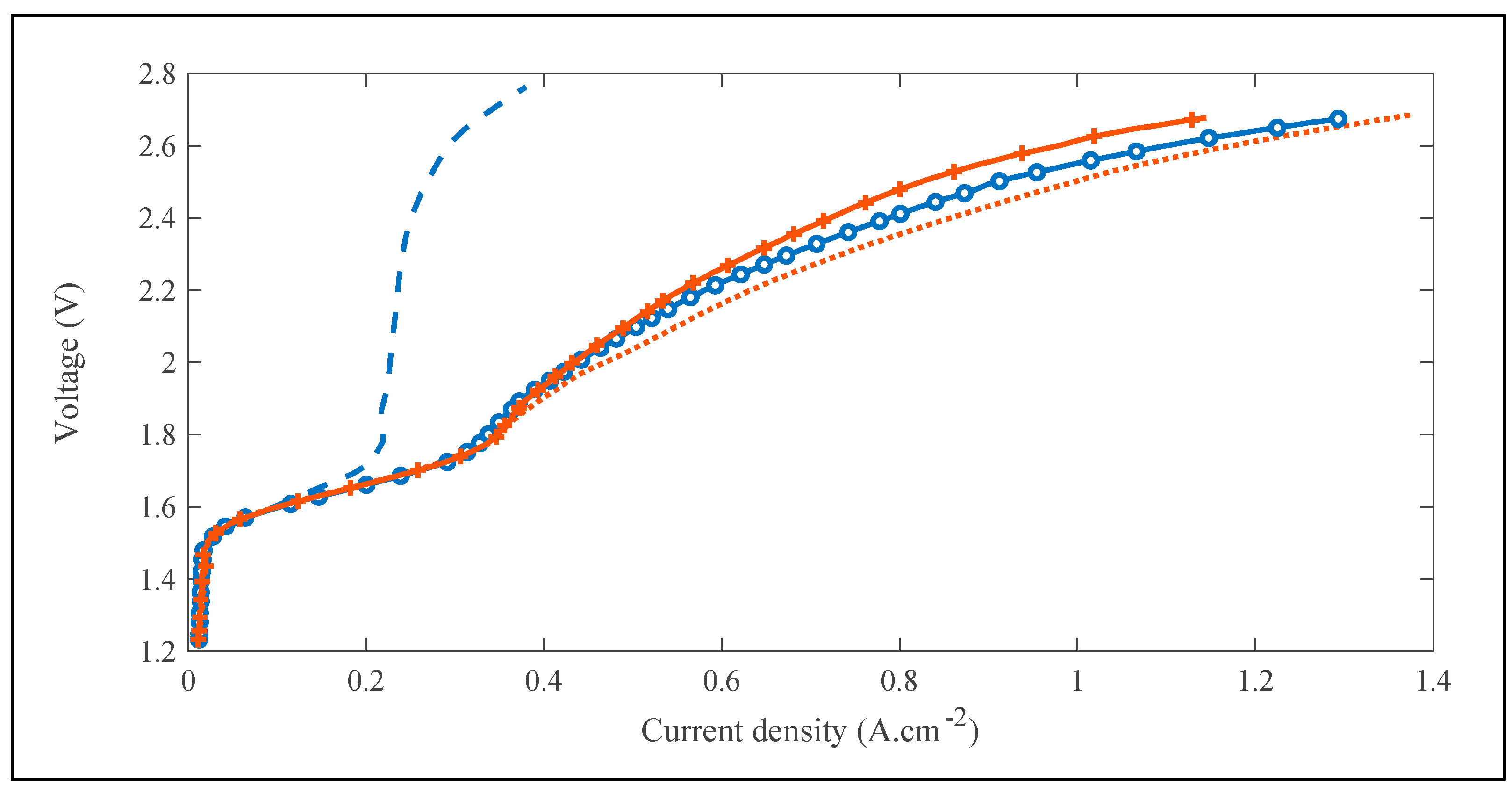
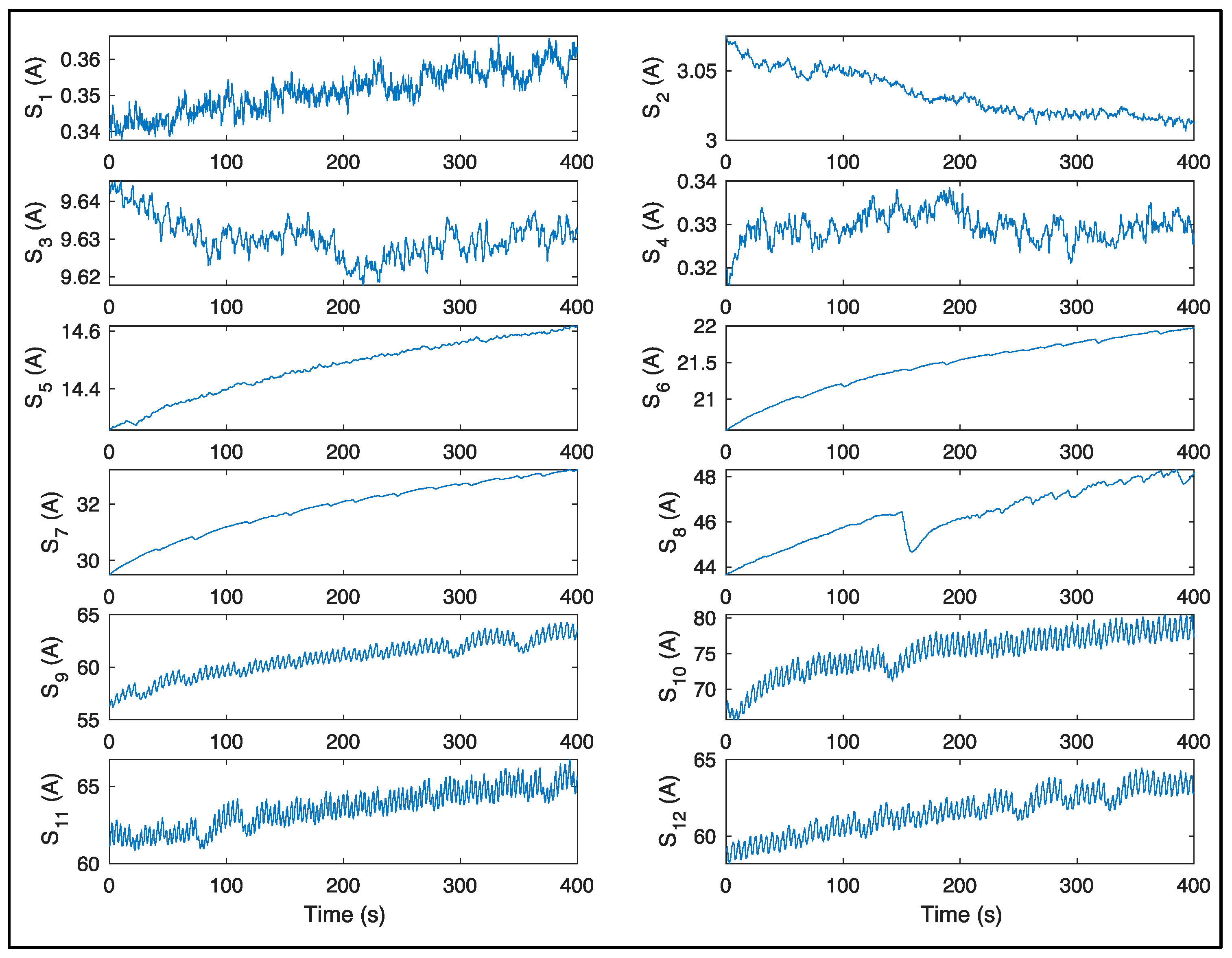
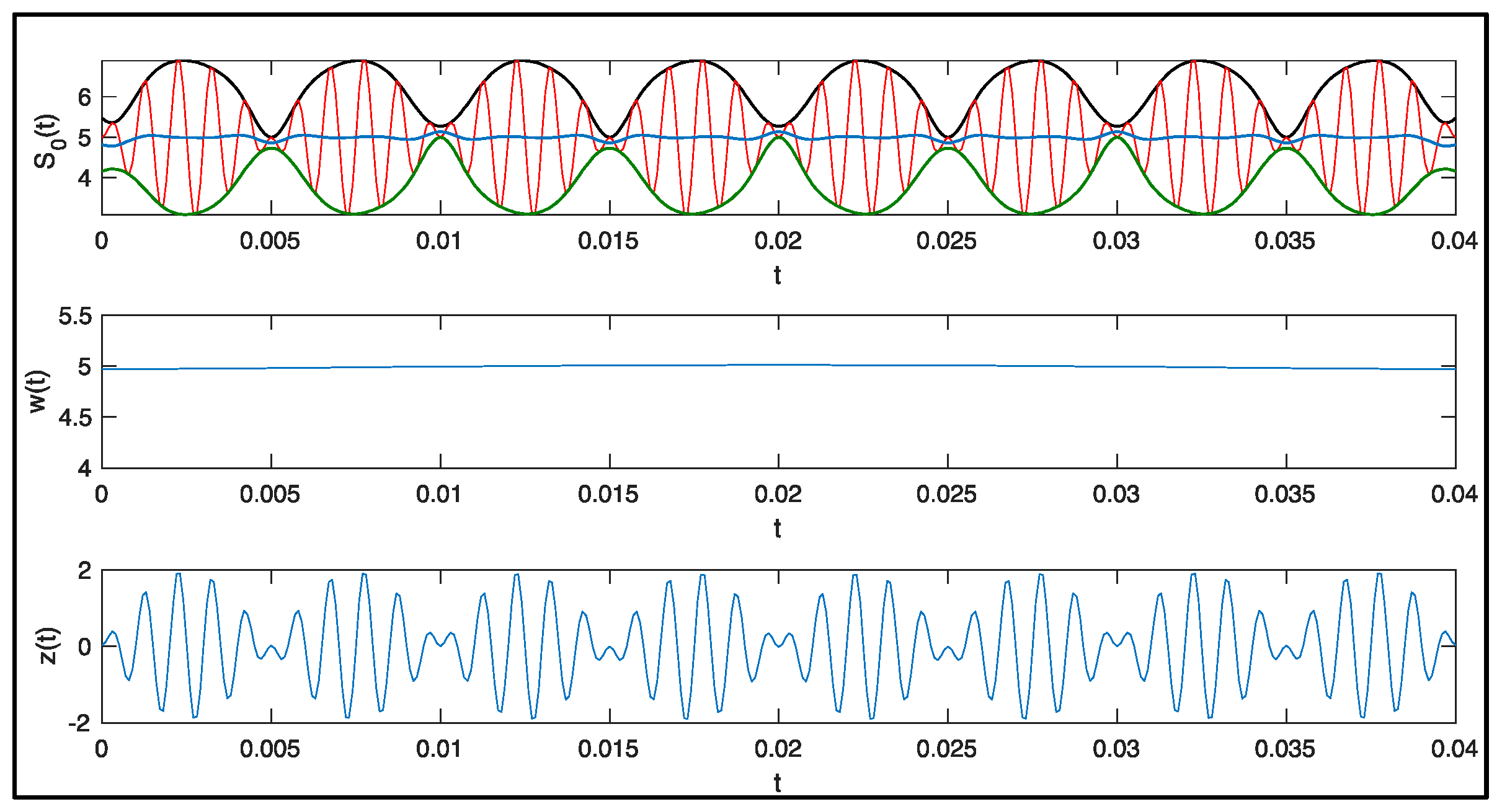
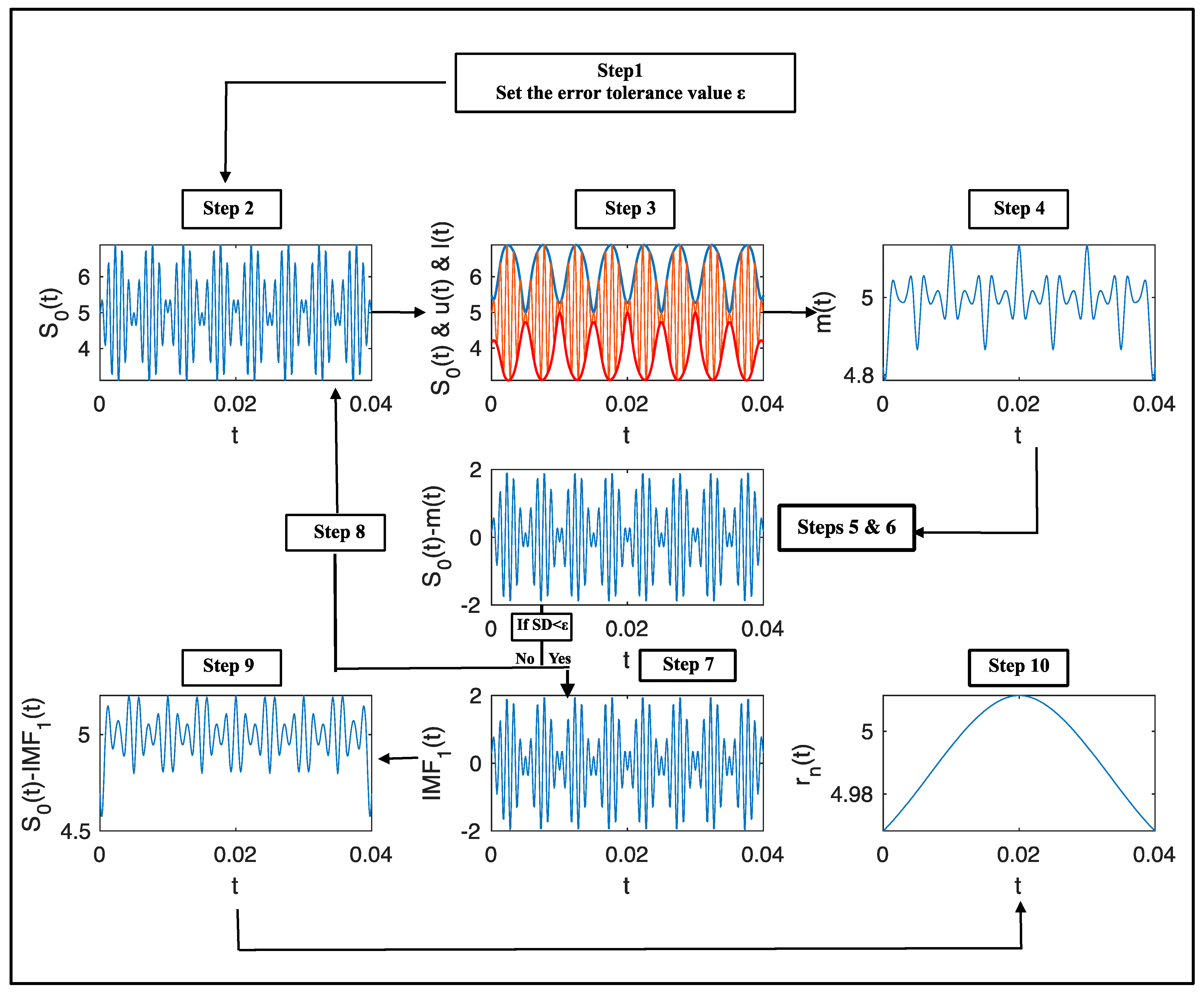
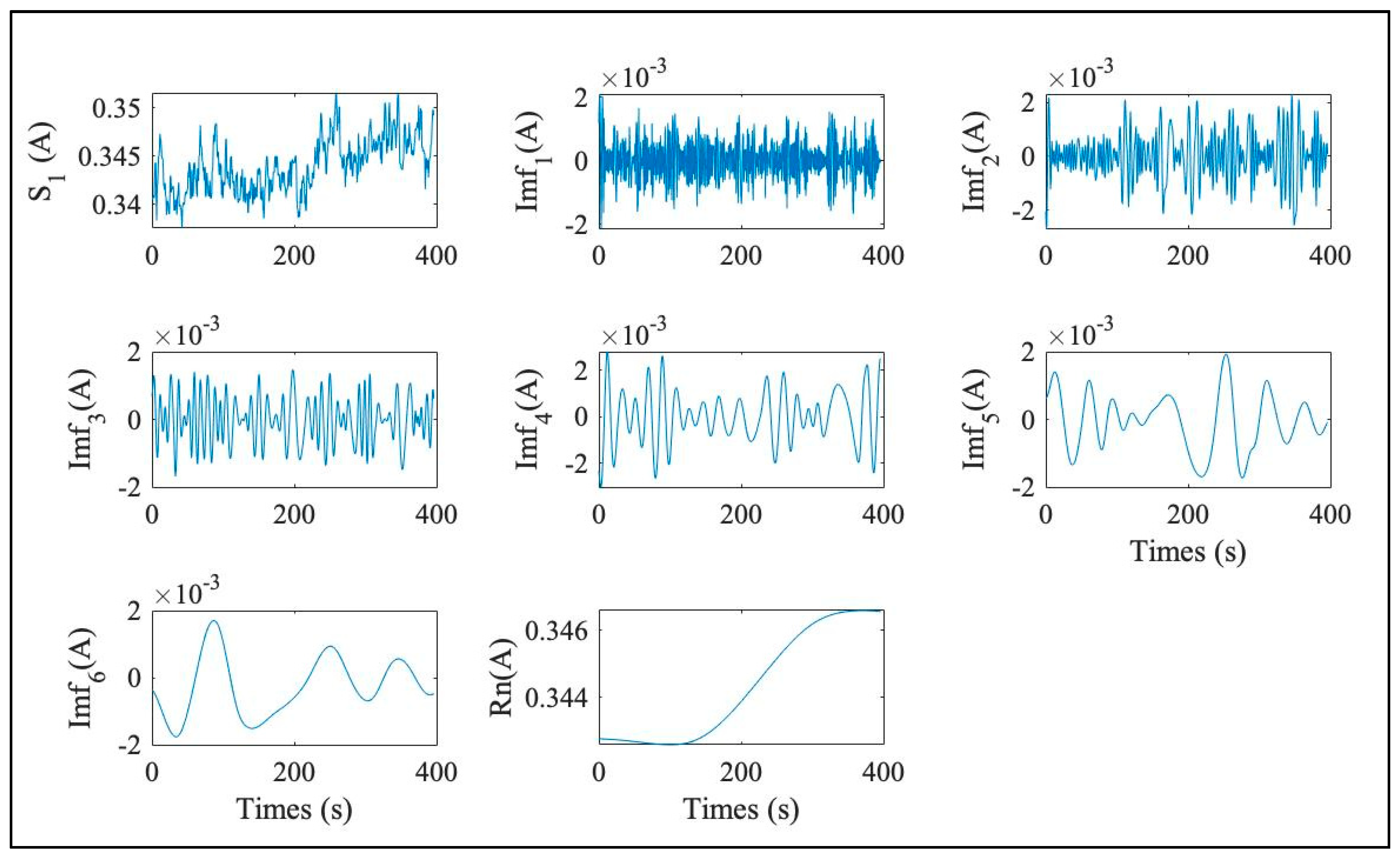
 case1,
case1,  case 2,
case 2,  case 3,
case 3,  case 4,
case 4,  case 5,
case 5,  case 6,
case 6,  case 7,
case 7,  case 8,
case 8,  case 9,
case 9,  case 10,
case 10,  case 11,
case 11,  case 12).
case 12).
 case1,
case1,  case 2,
case 2,  case 3,
case 3,  case 4,
case 4,  case 5,
case 5,  case 6,
case 6,  case 7,
case 7,  case 8,
case 8,  case 9,
case 9,  case 10,
case 10,  case 11,
case 11,  case 12).
case 12).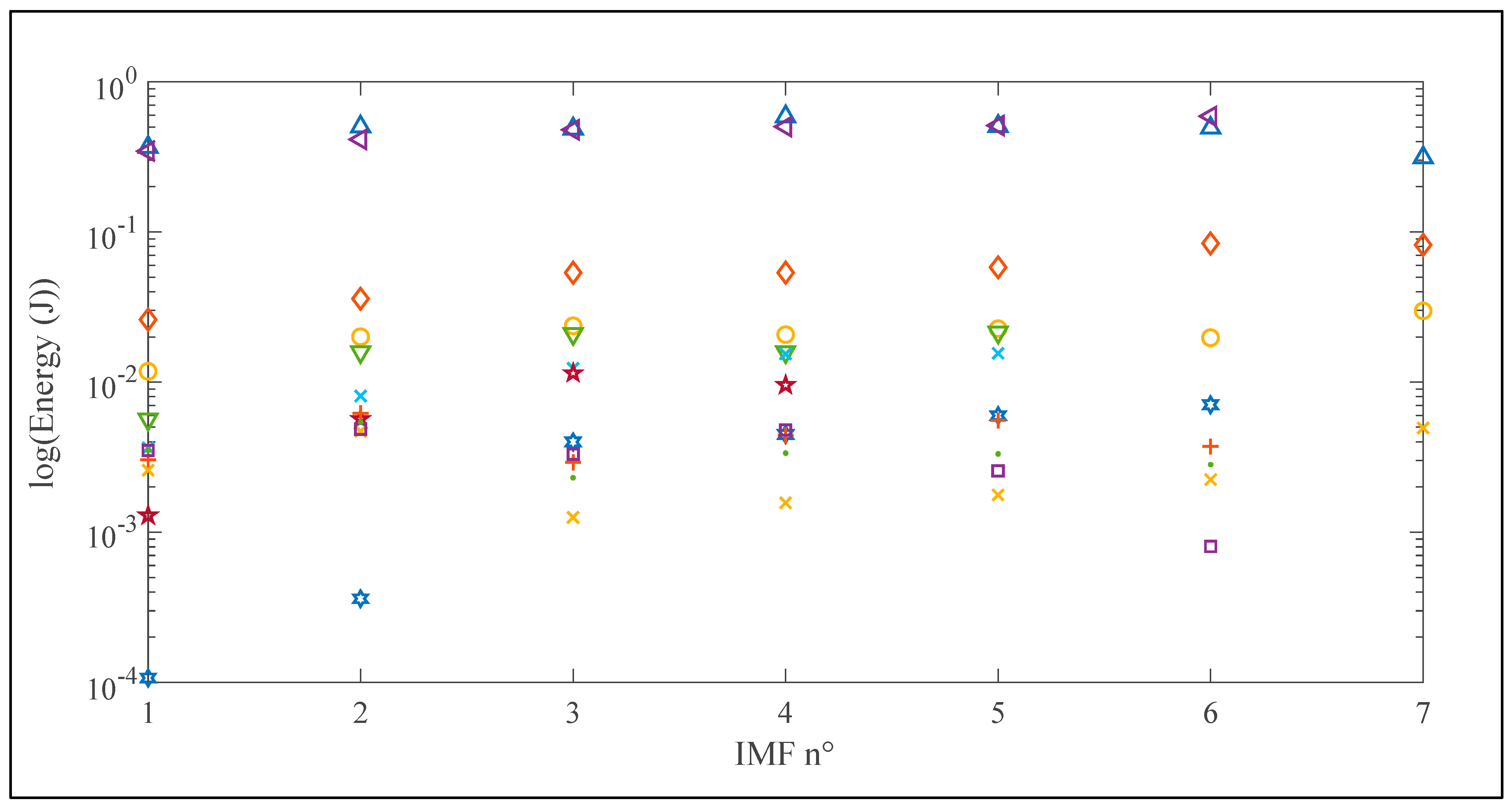
| Parameter | Value |
|---|---|
| Cell temperature | 25 °C |
| Anode pressure | 1 bar |
| Cathode pressure | 2 bar |
| Active area | 28 cm2 |
| Membrane thickness | 0.127 mm |
| LGDL thickness | 1.68 mm |
| Grill thickness | 1.02 mm |
| Case | 1 | 2 | 3 | 4 | 5 | 6 | 7 | 8 | 9 | 10 | 11 | 12 |
|---|---|---|---|---|---|---|---|---|---|---|---|---|
| Voltage (V) | 1.4 | 1.6 | 1.8 | 1.26 | 2 | 2.2 | 2.4 | 2.6 | 2.7 | 2.7 | 2.7 | 2.7 |
| Anode flow rate (L·min−1) | 0.15 | 0.15 | 0.15 | 0.15 | 0.15 | 0.15 | 0.15 | 0.15 | 0.15 | 0.03 | 0.05 | 0.07 |
| Cathode Flow rate (L·min−1) | 0.15 | 0.15 | 0.15 | 0.15 | 0.15 | 0.15 | 0.15 | 0.15 | 0.15 | 0.15 | 0.15 | 0.15 |
| Mean Current (A) (400 s) | 0.35 | 3.01 | 9.63 | 0.33 | 14.61 | 21.95 | 33.08 | 48.36 | 62.85 | 78.81 | 65.54 | 63.35 |
| Mean Current density (A·cm−2) | 0.01 | 0.10 | 0.34 | 0.01 | 0.52 | 0.78 | 1.18 | 1.72 | 2.24 | 2.81 | 2.34 | 2.26 |
Publisher’s Note: MDPI stays neutral with regard to jurisdictional claims in published maps and institutional affiliations. |
© 2021 by the authors. Licensee MDPI, Basel, Switzerland. This article is an open access article distributed under the terms and conditions of the Creative Commons Attribution (CC BY) license (https://creativecommons.org/licenses/by/4.0/).
Share and Cite
Aubras, F.; Damour, C.; Benne, M.; Boulevard, S.; Bessafi, M.; Grondin-Perez, B.; Kadjo, A.J.-J.; Deseure, J. A Non-Intrusive Signal-Based Fault Diagnosis Method for Proton Exchange Membrane Water Electrolyzer Using Empirical Mode Decomposition. Energies 2021, 14, 4458. https://doi.org/10.3390/en14154458
Aubras F, Damour C, Benne M, Boulevard S, Bessafi M, Grondin-Perez B, Kadjo AJ-J, Deseure J. A Non-Intrusive Signal-Based Fault Diagnosis Method for Proton Exchange Membrane Water Electrolyzer Using Empirical Mode Decomposition. Energies. 2021; 14(15):4458. https://doi.org/10.3390/en14154458
Chicago/Turabian StyleAubras, Farid, Cedric Damour, Michel Benne, Sebastien Boulevard, Miloud Bessafi, Brigitte Grondin-Perez, Amangoua J.-J. Kadjo, and Jonathan Deseure. 2021. "A Non-Intrusive Signal-Based Fault Diagnosis Method for Proton Exchange Membrane Water Electrolyzer Using Empirical Mode Decomposition" Energies 14, no. 15: 4458. https://doi.org/10.3390/en14154458






